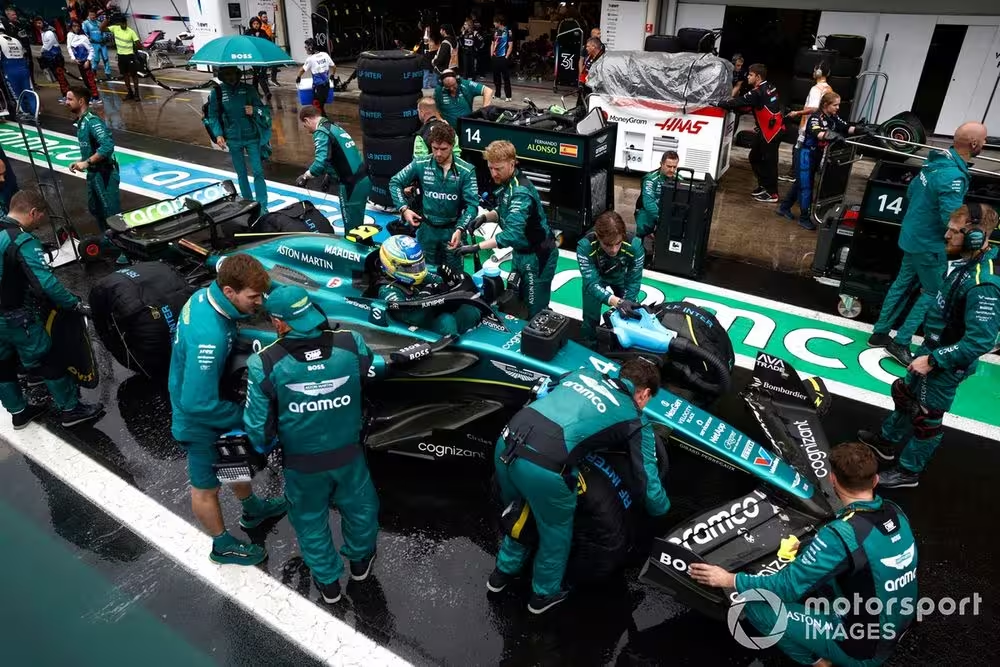Twelve months ago, Aston Martin left the Brazilian Grand Prix with a podium finish that pointed to the outfit finally having some answers about its car as it headed into the winter.
Fast-forward to now and things could not be more different, as the squad left Interlagos scratching its head over problems in the wet race and still short of a solution for its drop of form this year.
Perhaps most alarming of all, for a team that started the year neck and neck with Mercedes, is that in the dry last weekend its race pace was the slowest out of everyone.
It’s something that Fernando Alonso was more than willing to point out, as he hinted at the miracle of some impressive times in Sunday morning’s wet qualifying session before he crashed.
“We are taking huge risks,” he said. “We are the 10th fastest team in the dry and then we were P2 in qualifying…so it shows the level of commitment we had.”
Analysis at its Silverstone factory this week at least gave the team some answers as to its wet-weather struggles – and especially the brake problems that pitched Lance Stroll into the wall on the formation lap and worried Alonso all afternoon.
The conclusion is they were triggered by imbalance issues as the result of changing floor specs from qualifying into the race.
Switching after its double qualifying crashes from its planned Suzuka concept to the version it introduced in Budapest resulted in the car’s aero and mechanical platform not being ideal – hence a lot of rear-locking.
While those issues have been quickly understood, what the team is still chasing right now is a solution to its relative lack of performance against the opposition.
Switching floors
Fernando Alonso, Aston Martin AMR24, in the pits
Photo by: Zak Mauger / Motorsport Images
In the wake of a new floor that was introduced at the United States Grand Prix not delivering what was hoped for, Aston Martin has found itself having to mix and match upgrades and old concepts to try to find the best platform.
Experiments in Mexico confirmed that for low-speed circuits a version of the Suzuka floor concept – which the team also intended to run in Brazil before its plans were forced to change because of the qualifying crashes – was best.
Aston switched to the Budapest version, which is better suited for higher-speed tracks and will likely be used in Las Vegas and Qatar.
From the outside, these floor experiments could suggest that the squad…
Click Here to Read the Full Original Article at Motorsport.com – Formula 1 – Stories…

